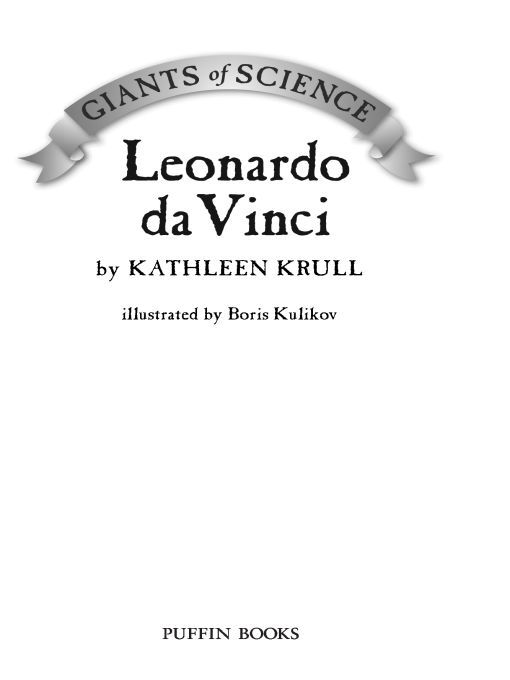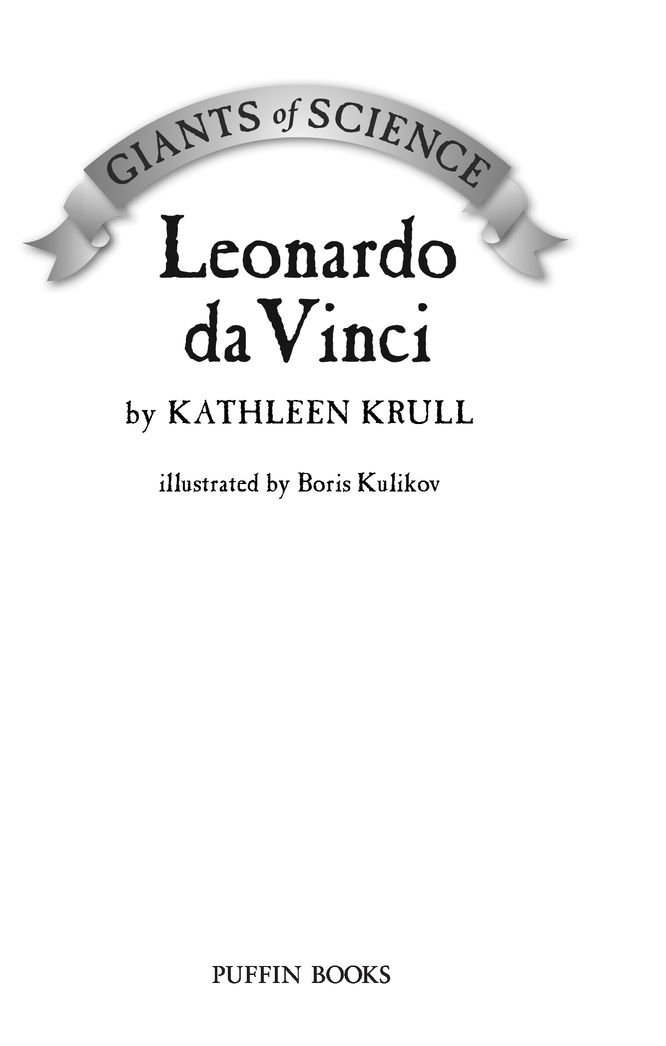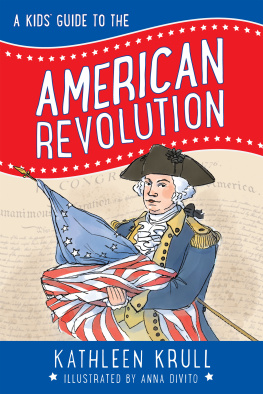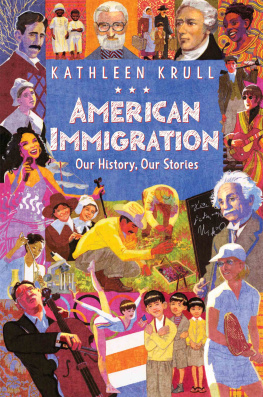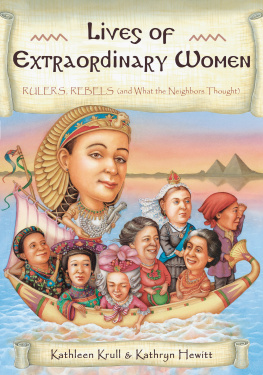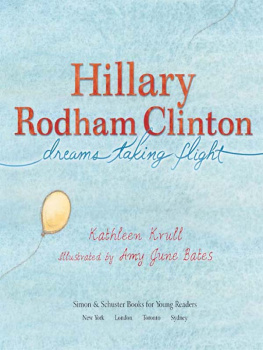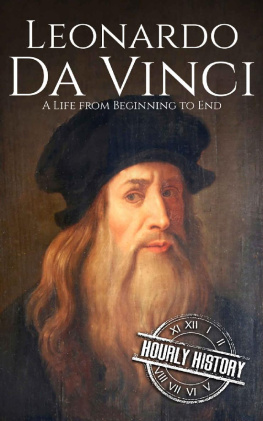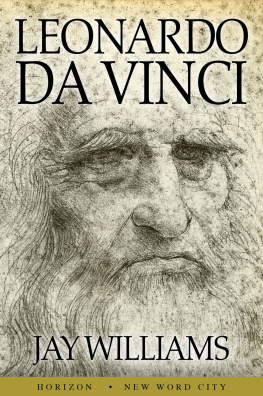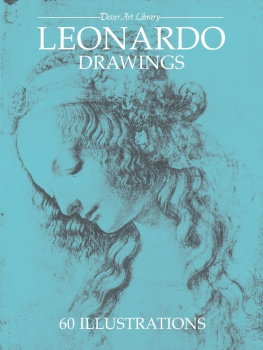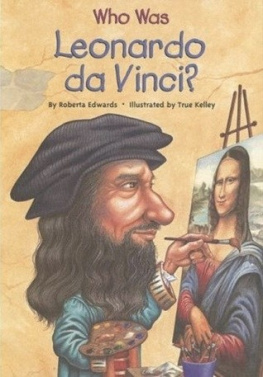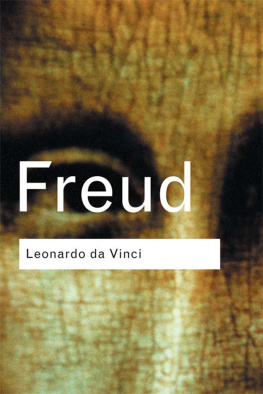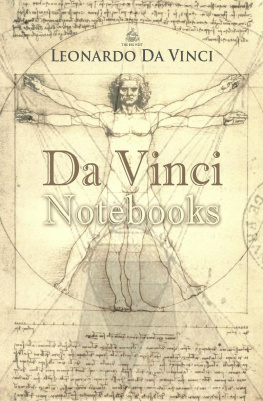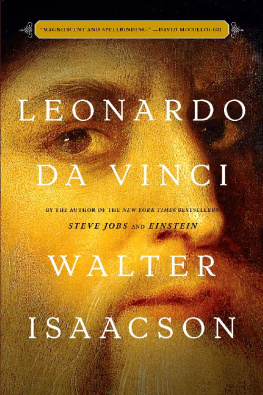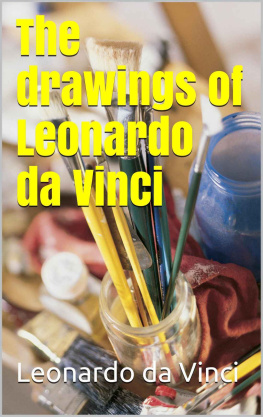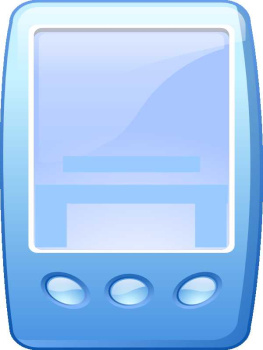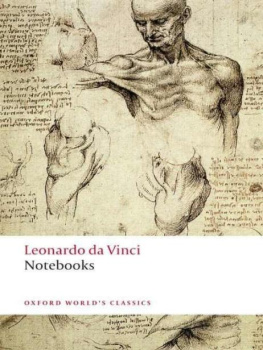Table of Contents
Leonardos Notebook
At the time Leonardos mules were schlepping the notebooks around Italy, the pages were valuable only to their author. Today they are among the most precious things on the planet. The notebooks, the core obsession of Leonardos life, are what place him among the giants of science, not specific discoveries he made or new inventions he created.
So what are they, exactly?
We call them notebooks, but they are not bound like a typical notebook. Mostly they are loose sheets of paper casually gathered together and wrapped with different fabrics. Some pages are large. Others are only two or three inches square; these must be from the tiny blank notebooks he always kept tied to his belt.
Leonardo went out of his way to make the notebooks difficult for any other person to readtremendously out of his way. The main roadblock is his famous mirror-image script. His tiny writing goes backward, reading from right to left. The drawings arent backward, just the words.
What was he thinking?
For Jane O ConnorK. K.
Acknowledgments
For help with research, the author thanks
Robert Burnham and Patricia Laughlin,
Patricia Daniels, Dr. Lawrence M. Principe,
Susan Cohen, Gary Brewer, Dr. Helen Foster James
and Bob James, Sheila Cole, Janet Pascal, Gery Greer,
and Bob Ruddick.
INTRODUCTION
If I have seen further [than other people] it is by standing upon the shoulders of giants.
Isaac Newton, 1675
WHERE DO SCIENTISTS brilliant ideas and discoveries come from?
Well, nobody lives in a vacuum, and ideas dont come out of nowhere. Even Isaac Newton (a giant of science if ever there was one) depended on what great thinkers before him had figured out in order to see further, to make discoveries of his own.
People hear the name Leonardo da Vinci, and they think artistic genius of the Renaissance. And sure, he created the Mona Lisa and The Last Supper, two of the worlds most famous paintings.
Yet for thirty yearsthe whole last half of his lifehe spent most of his time doing research in fields ranging from astronomy to anatomy, zoology to geology, and botany to paleontology.
Scientist wasnt even a word Leonardo would have knownpeople didnt start using the term until the early nineteenth century. (He might have called himself a natural philosophersomeone who wants to make sense of the natural world.) But he would have known the Latin word scientia, which means knowledgeknowledge that explains the universe and the principles that make it work. Leonardo was very interested in scientia.
Yet, in books about scientists, Leonardo isnt always included. Perhaps thats because, in the history of science, Leonardo is like a bridge. He stands right between the medieval view of the world and the modern view based on observation and experimentation. He looks backward to a time when nature seemed illogical, magical. He looks ahead to a time when nature is viewed as operating by rules and laws that can be discovered.
Leonardo did indeed see further than anyone of his era. But whose shoulders did he stand on? And, in turn, did his work, his discoveries, inspire other scientists?
CHAPTER ONE
So Many Things Unknown!
EUROPE IN THE Middle Agesfirst of all, there were no books. No printed books, that is. Just manuscripts in Latin, tediously copied by hand for the rich. Peasants had never seen one. Most people couldnt read or write anyway.
There were no bathrooms. Hardly anyone knew what soap or underwear was. The poor ate with their fingers; utensils were for the rich. Most adults had no more than a few teeth in their heads.
Almost half of all children died before they were a year old. Women, on average, could expect to live only until age twenty-four. Thats because so many didnt survive childbirth.
In the countryside, the poorest peasants lived in extreme poverty and filth, ten to twenty people to a damp hut. They slept on the floor, their farm animalsas well as ratsbeside them. After a bad harvest, when a famine would sweep through, people starved to death.
In cities, streets served as toilets, and piles of excrement were left to mold until the next rain. Every few decades came a mysterious plague called the Black Death for the hideous black blisters it inflicted. The epidemic of 1348, which killed one out of every three people in Europe, was ascribed by many doctors to the rare placement in the sky of three planets.
Doctors varied wildly in training, and progress in medicine was sluggish. There were physicians with degrees from famous universities. Still, the books they studied had been written more than a thousand years earlier. Other doctors had little or no schooling; barbers sometimes performed surgery. And if a limb had to be amputated, pouring boiling oil onto the wound was the method used to stop bleeding. A urine flask was the universal symbol for physicians; they spent more time examining urine than anything else.
Doctors knew how to set broken bones. But the surefire cure for nosebleed? Pig manure.
Ten green lizards, cooked slowly in olive oil, were believed to heal an open wound. One medicine was made from earthworms washed in wine and donkeys urine; another called for a horn of a unicorn. Gout, a painful swelling of the joints, was treated by placing a sapphire ring on a certain finger of the patient. Blood-sucking leeches, applied when the planets were in alignment, could fix many ailments. More common was simply slicing open the skin, trying not to sever an artery, to allow the release of bad blood.
Peoples lives were short and violent. The rate of accidental death was high; the murder rate was twice as high. Many rulers were tyrantssome homicidal. Wars were common. No country, or even city, was stable. Women were viewed as vainthe devils decoy. And if they stood out in any suspicious way, they might be tried for witchcraftand burned.
The all-powerful Catholic Church was a beacon of light and learning in Europe in the Middle Ages. But non-believers were often brutally persecuted.
In ancient Greece and Rome, in China, and in Arab countries, scientists had discovered much about astronomy, medicine, mathematics, and more. Islamic scholars translated the work of ancient Greek scientists into Arabic, keeping their discoveries alive, adding their own ideas to them. But in Europe, much of this body of knowledge was lost for a long timecenturies in fact.
Sciences in medieval times did include astronomy and mathematics, but it was still an age when people believed in magic. So pseudosciences were taught as wellthe study of angels; physiognomy, the link between a persons character and what he or she looks like; astrology, the belief that the planets influence human behavior; and alchemy, the study of how to make gold out of other metals.
Learned men argued whether or not angels supplied the force that kept the planets in motion. And they counted only seven planetsof which Earth was not one. Instead, Earth occupied the center of the universe, with other astronomical bodies like the sun revolving around it.
But a great wave was splashing across Europe, changing how people thought in some very fundamental ways. The result was a new confidence in human achievement, what was possible to do in ones lifetime here on Earth. This led to an explosion of new information and exchange of new ideas. All this coincided with a wonderful rediscovery of the ancient knowledge that had been lost.

